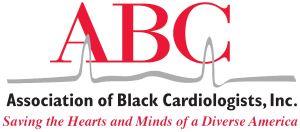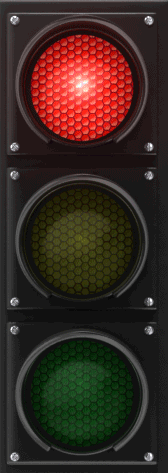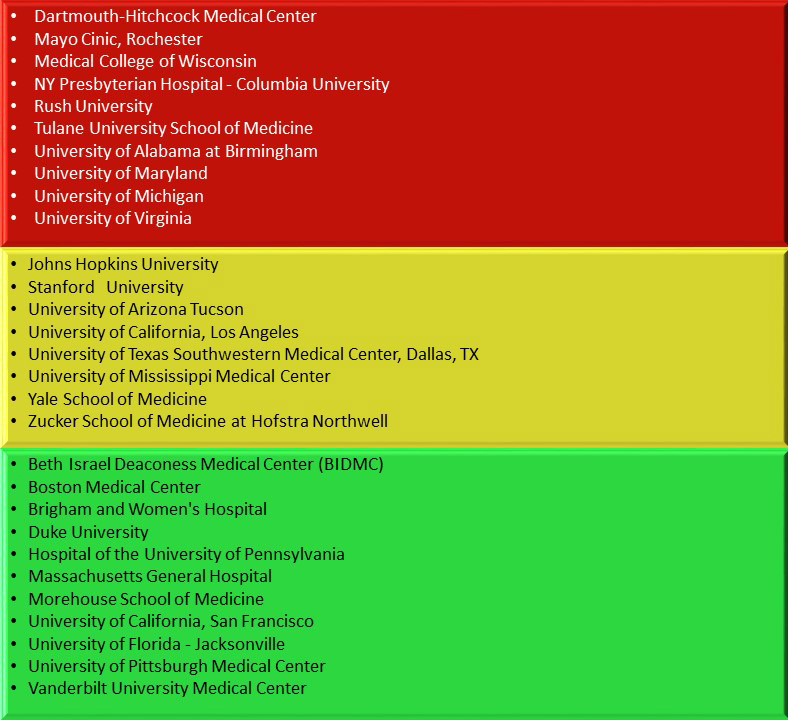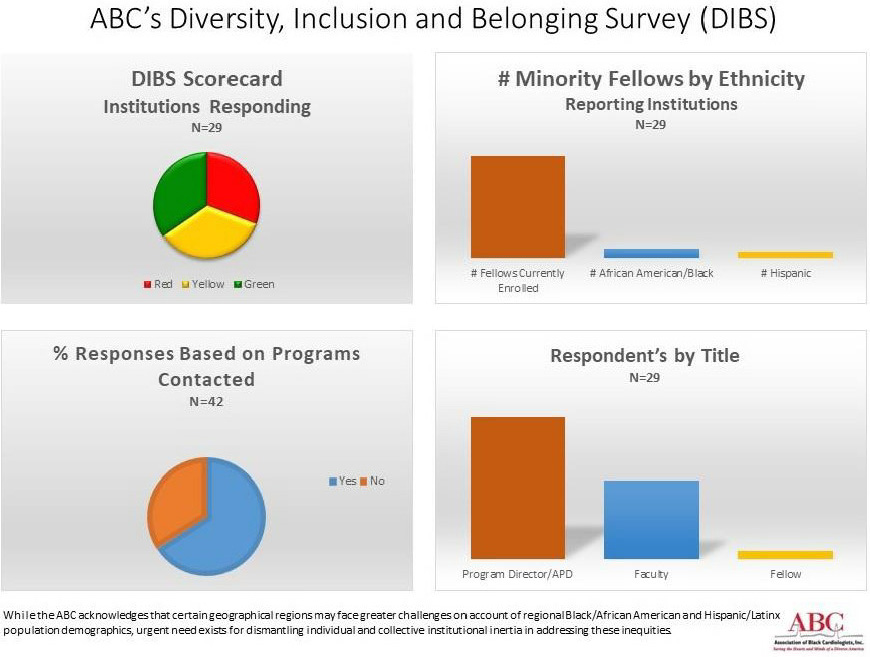The ABC Updates its CV DIBS Rankings
As part of its commitment to diversity in the workforce, the Association of Black Cardiologists, Inc. (ABC), seeks to provide insight into cardiovascular (CV) training programs in the US. The Diversity, Inclusion and Belonging Scorecard (DIBS), launched in November, 2020, is designed to understand and rank the diversity in CV academic training programs. This article updates the next phase of the initiative.
 ABC-Diversity, Inclusion and Belonging Scorecrd (ABC-DIBS)
ABC-Diversity, Inclusion and Belonging Scorecrd (ABC-DIBS)
| Taskforce Chair: Michelle Albert, MD, MPH Members: ABC Staff Support: |
 |

Pervasive health inequalities demand urgent prioritization of diversification of the cardiovascular workforce. In this vein, the ABC is launching the ABC Diversity, Inclusion and Belonging Scorecard (DIBS) as part of the organization’s workforce equity initiatives. While intensive efforts must focus on a deep pipeline [i.e, kindergarten, high school and college] to achieve diversity in science and medicine, many qualified under-represented in medicine are unable to secure fellowship positions in training programs. According to the AAMC 2020-2021 report on residents, a total of 16,412 Black/African American and Hispanic/LatinX residents were enrolled in all programs. There are approximately currently 136 Black/African American and 137 Hispanic/LatinX fellows in general cardiology training programs in the United States (U.S). ABC-DIBS is an effort to define racial/ethnic diversity in cardiology fellowship programs in the US focused on the most populous racial and ethnic populations residing in the U.S.
In this first rendition of ABC-DIBS, we reviewed and included the top 20 cardiology training programs based on the US News and Report’s “Best Global Universities for Cardiac and Cardiovascular Systems.” (https://www.usnews.com/education/best-global-universities/cardiac-cardiovascular) ranking of cardiovascular programs. An additional 22 programs were contacted to enhance geographical diversity of this first rendition of the score card. Therefore, a total of forty-two programs were contacted. This initial effort will expand to all training programs in the future.
After institution selection, a variety of methods were used to acquire information about Black/African American and Hispanic/LatinX fellow and faculty representation in respective programs. Requests were sent to general cardiovascular program directors to ascertain required information about the current number of general cardiology fellowship trainees and faculty regardless of cardiovascular specialty.
First contact was via email by an ABC staff member with a minimum two subsequent communications based on non-responsiveness. These efforts were supplemented by information from respective institution faculty and fellows. The survey questions were as follows:
1. Name (Program Director, Faculty, Fellow providing information)
2. Name of Institution
3. Number of current general cardiology fellows
4. Number of current Black/African American fellows
5. Number of current Hispanic/LatinX fellows
6. Current number of faculty
7. Number of Black/African American faculty
a. Black/African American (Professor level)
b. Black/African American (Associate Professor level)
c. Black/African American (Assistant Professor level)
d. Black/African American (Instructor level)
8. Number of Hispanic/LatinX faculty
a. Hispanic/LatinX (Professor level)
b. Hispanic/LatinX (Associate Professor level)
c. Hispanic/Latinx (Assistant Professor level)
d. Hispanic/LatinX (Instructor level)
9. If you are not the program director, please provide the name and contact information for this individual.
The scoring framework leveraged a “stoplight” approach (i.e red, yellow, green) using color-coded indicators as outlined below. The color indicators are based on proposed targeted percentages for Black/African American and/or Hispanic/LatinX cardiovascular fellowship composition. According to the 2020 US Census, Black/African American individuals represent 12.1% of the population while Hispanic/LatinX persons comprise approximately 18.7%. Given this combined Black and Hispanic group representation of 30.8% of the population, it was decided that it is reasonable to aspire for the representation of Black/African American and Hispanic/LatinX trainees and faculty of 30.8% for each category respectively across cardiology training programs as a warranted target for equitable representation regardless of geography.
The “spotlight” color-coded indicators were categorized as follows:
Red – a combined percentage of Black/African American and Hispanic/Latinx fellows at less-than 10%
Yellow – a combined percentage of Black/African American and Hispanic/Latinx fellows at 10-19%
Green – a combined percentage of Black/African American and Hispanic/Latinx fellows at 20% or above
As noted in Exhibit I below, out of the forty-two programs contacted, data were collected from twenty-nine programs for a 69% response rate. Those responding represented some of the country’s largest institutions. The percentage of Black/African American and Hispanic/Latinx trainees and faculty were calculated for each program. This document only presents data for fellows. A total of 11 programs were categorized as “green” (40%), 8 programs as “yellow” (28%) and 10 programs as “red” (34%).
While the ABC acknowledges that certain geographical regions may face greater challenges on account of regional Black/African American and Hispanic/Latinx population demographics, urgent need exists for dismantling individual and collective institutional inertia related to addressing workforce pathway inequities. ABC also acknowledges that race/ethnicity was not self-reported by respective fellows as a potential limitation, albeit it is reasonable to believe that program directors and faculty who provided information are credible.
Exhibit I

